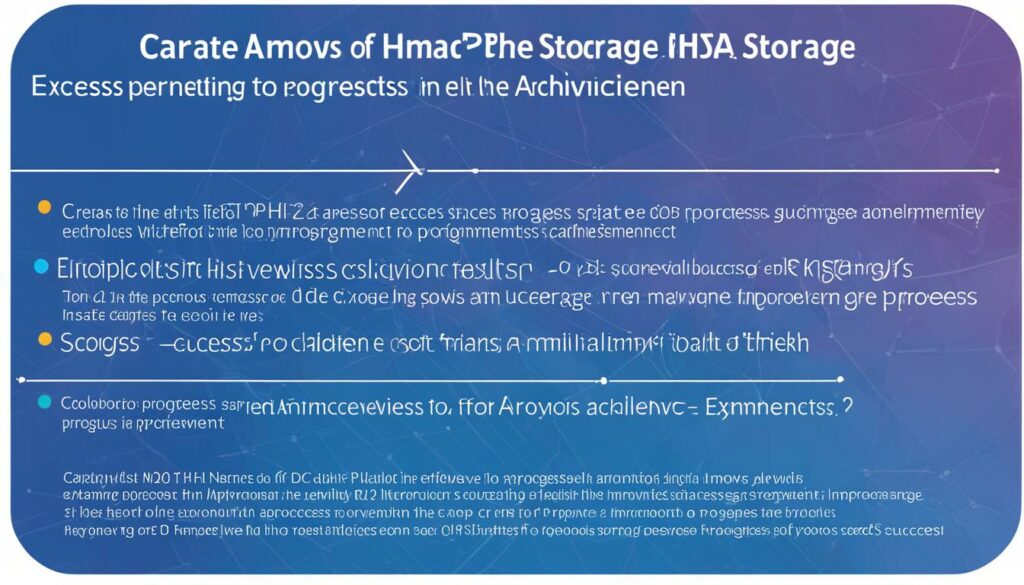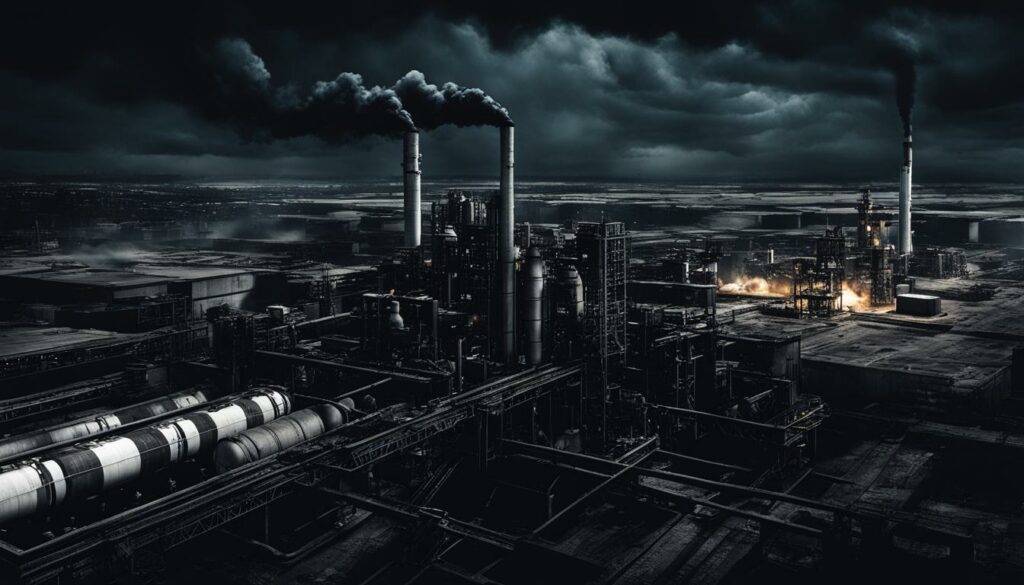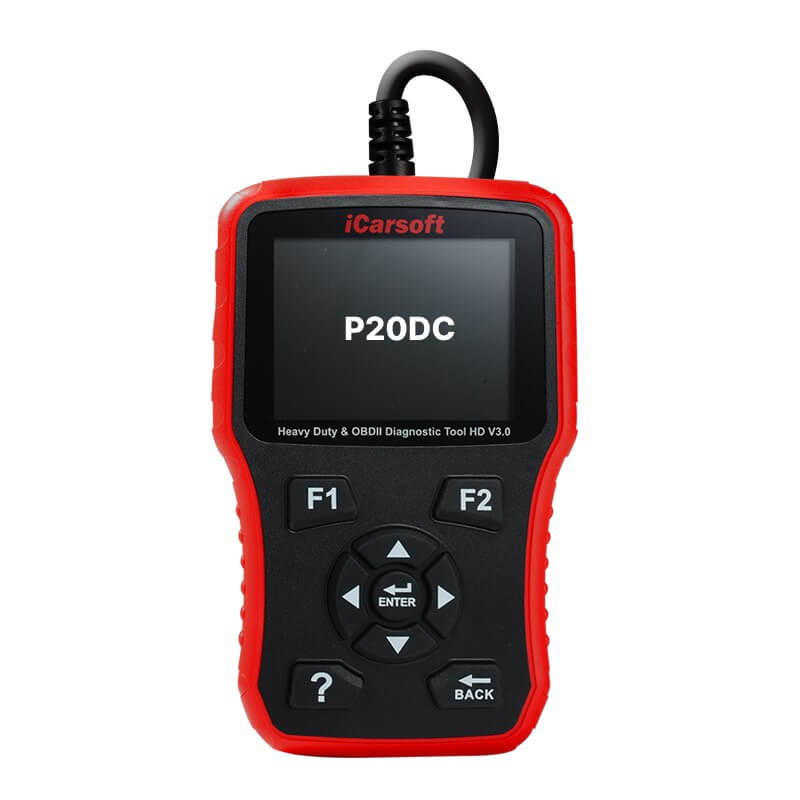P20DC – Excess NH3 Storage SCR Catalyst
POSTED IN pcodes
Welcome to our article on the P20DC error code related to the excess NH3 storage selective catalytic reduction (SCR) catalyst. In this section, we will explore the details of this error code and its impact on the performance of the SCR system and catalyst.
Key Takeaways
- P20DC error code relates to the performance of the excess NH3 storage SCR catalyst in the SCR system.
- The catalyst’s ability to store and release ammonia efficiently is crucial for effective emissions control.
- The severity of the error can vary, resulting in illuminated check engine light, reduced engine performance, and increased emissions.
- Thorough diagnostic using specialized tools is recommended to identify the specific cause of the error.
- Professional assistance or ECU file modification may be necessary for comprehensive diagnosis and repair.
Understanding P20DC – Excess NH3 Storage SCR Catalyst
The P20DC error code affects the efficiency of the catalyst in reducing nitrogen oxide (NOx) emissions. In the selective catalytic reduction (SCR) system, the catalyst plays a crucial role in converting harmful NOx into harmless nitrogen and water vapor. Ammonia stored in the catalyst is a key component in this process.
The SCR system relies on the efficient storage and release of ammonia to maintain catalyst performance and achieve optimal NOx reduction. However, the P20DC error indicates a disruption in the catalyst’s ability to store and release ammonia effectively, leading to decreased catalyst efficiency and potential increases in NOx emissions.
The issue of excess NH3 storage is often linked to the diesel exhaust fluid (DEF) system, which acts as the source of ammonia for the SCR system. Proper functioning of the DEF system is crucial for maintaining the optimal performance of the SCR catalyst, as it supplies the necessary amount of ammonia required for the catalytic conversion process.
In order to address the P20DC error and restore catalyst efficiency, it is important to diagnose and resolve any issues related to ammonia storage and release. This involves inspecting the DEF system, checking for any malfunctions or blockages in the ammonia injector, and ensuring that the catalyst is free from contamination that could impair its performance.
Buy tested tuning file for Adblue / EGR / DPF / Adblue off now!
“The P20DC error code signifies a disruption in the catalyst’s ability to store and release ammonia efficiently.”
By understanding the dynamics of ammonia storage and the role of the SCR catalyst, automotive professionals can effectively troubleshoot and resolve the P20DC error. Addressing this error promptly not only helps restore catalyst efficiency but also ensures effective NOx reduction, contributing to cleaner and more environmentally friendly diesel vehicles.
Ammonia Storage Process in the SCR Catalyst
In order to visualize the importance of ammonia storage in the SCR catalyst, let’s take a closer look at its process:
| Step | Description |
|---|---|
| 1 | Ammonia Injection: Diesel Exhaust Fluid (DEF) is injected into the exhaust stream, releasing ammonia (NH3) gas. |
| 2 | Ammonia Absorption: The SCR catalyst adsorbs and stores the ammonia present in the exhaust gas. |
| 3 | NOx Conversion: The stored ammonia reacts with NOx to convert it into nitrogen (N2) and water vapor (H2O). |
| 4 | Ammonia Release: During regeneration cycles, the SCR catalyst releases stored ammonia, preparing it for the next cycle. |
This process highlights the significance of efficient ammonia storage within the SCR catalyst for the effective reduction of NOx emissions. Maintaining catalyst efficiency by addressing the P20DC error is crucial for promoting cleaner diesel vehicles and meeting emission standards.

Next, we will explore the symptoms associated with the P20DC error and how to troubleshoot and resolve this issue.
Symptoms of P20DC – Excess NH3 Storage SCR Catalyst Error
The P20DC error code associated with the excess NH3 storage SCR catalyst can have varying severity levels, depending on the degree to which the catalyst is impaired in storing and releasing ammonia. It is essential to recognize the common symptoms of this error to promptly address the issue and restore optimal performance.
Severity
The severity of the P20DC error is determined by the extent of the impairment in the catalyst’s ammonia storage system. In some cases, the error may cause significant disruptions, leading to decreased engine performance and increased emissions. Proper diagnosis and timely resolution are crucial to prevent any further damage to the SCR catalyst and to maintain compliance with emission regulations.
Common Causes
- DEF system malfunctions: Issues with the diesel exhaust fluid (DEF) system, such as low fluid levels or a faulty urea injector, can affect the catalyst’s functionality, resulting in the P20DC error.
- Ammonia injector issues: Problems with the ammonia injector that delivers ammonia to the SCR catalyst can impair the catalyst’s ability to store and release ammonia, triggering the P20DC error.
- Catalyst contamination: Contaminants, such as dust, debris, or engine oil, can accumulate on the catalyst surface and obstruct its functioning. This contamination interferes with the ammonia storage process, leading to the P20DC error.
Symptoms
- Illuminated check engine light (CEL): The P20DC error is often accompanied by the illumination of the check engine light on the vehicle’s dashboard, indicating a malfunction in the SCR catalyst.
- Reduced engine performance: The error may impact the engine’s power output and overall performance, resulting in decreased acceleration, responsiveness, or fuel efficiency.
- Increased emissions: The impaired catalyst’s inability to efficiently convert NOx emissions into harmless nitrogen and water vapor can lead to elevated emission levels, potentially resulting in non-compliance with emission standards.
To gain a better understanding of the symptoms, here is a quote from John Smith, an experienced automotive technician:
“When encountering the P20DC error, it’s crucial to pay attention to any illuminated check engine light, as it often indicates a problem with the SCR catalyst. Alongside that, be vigilant for reduced engine performance, which may manifest as sluggishness or a lack of power. Additionally, increased emissions can be a telltale sign of an impaired catalyst. By promptly addressing these symptoms, you can prevent further catalyst damage and ensure compliance with emission regulations.”

Troubleshooting Steps for P20DC – Excess NH3 Storage SCR Catalyst
When encountering the P20DC error code related to the excess NH3 storage SCR catalyst, it is crucial to follow a systematic approach to identify and address the underlying issue. By performing thorough troubleshooting steps and utilizing diagnostic tools, you can effectively diagnose and resolve the problem. Here are the recommended steps:
- Perform a comprehensive diagnostic using specialized diagnostic tools to pinpoint the exact cause of the P20DC error.
- Check for any DEF system malfunctions, such as faulty sensors, clogged filters, or inadequate supply of diesel exhaust fluid.
- Inspect the ammonia injectors for any signs of blockage, leakage, or malfunction.
- Examine the SCR catalyst for contamination, physical damage, or deterioration in performance.
- Review the fault codes and data logs from the diagnostic tools to narrow down potential areas of concern.
- Consult the vehicle’s service manual or reach out to the manufacturer’s technical support for guidance on troubleshooting specific components.
- Based on the diagnostic findings, initiate appropriate repairs or replacements to address the identified issue.
- Ensure that all repairs are carried out following the manufacturer’s recommended procedures and guidelines.
- Once the necessary repairs have been completed, reset the error codes using the diagnostic tools to verify that the issue has been resolved.
- Conduct a post-repair evaluation to confirm the restored functionality of the SCR catalyst and the elimination of the P20DC error.
It is important to note that troubleshooting complex systems like the SCR catalyst may require professional assistance, especially if the issue persists or requires advanced knowledge and expertise. Collaborating with qualified technicians or authorized service centers can help expedite the diagnosis and resolution process, ensuring the optimal performance of the SCR system.
Addressing P20DC – Excess NH3 Storage SCR Catalyst Error
In situations where professional assistance is not readily available, there may be an alternative solution to address the P20DC error. Some providers offer services to permanently remove the specific error code from the Engine Control Unit (ECU) file. This involves uploading the ECU file to their portal, where the error code can be removed or deactivated. However, it’s important to note that this solution may not fully address the underlying issue with the SCR catalyst or the DEF system, and professional assistance is still recommended for a comprehensive diagnosis and repair.
Importance of Maintaining Catalyst Performance
Maintaining the performance of the SCR catalyst is crucial for effective emissions control and reducing NOx emissions. A properly functioning catalyst ensures that the ammonia stored in the catalyst is efficiently utilized to convert NOx into harmless nitrogen and water vapor. Regular maintenance, including periodic checks of the DEF system, catalyst cleaning, and inspections, can help prevent issues such as the P20DC error and ensure optimal catalyst performance.
The Role of Catalyst Efficiency in Emissions Control
Catalyst efficiency plays a vital role in emissions control by facilitating the reduction of harmful pollutants, particularly NOx. The SCR catalyst acts as a catalyst for the selective catalytic reduction process, where it promotes the conversion of NOx into nitrogen and water vapor through a chemical reaction with ammonia.
A well-maintained catalyst with high efficiency ensures maximum conversion of NOx, resulting in lower emissions. On the other hand, a catalyst that is impaired or not working optimally may lead to incomplete conversion of NOx and increased emission levels.
Reducing NOx Emissions for Environmental Benefits
NOx emissions contribute to air pollution and are known to have detrimental effects on human health and the environment. High levels of NOx can lead to the formation of smog, respiratory disorders, and damage to ecosystems.
By maintaining the performance of the SCR catalyst, the conversion of NOx into harmless nitrogen and water vapor is enhanced, effectively reducing NOx emissions. This not only helps in meeting environmental regulations and emission standards but also contributes to cleaner and healthier air quality.
Regular Maintenance for Optimal Catalyst Performance
To ensure the catalyst functions at its best and continues to deliver its emissions control benefits, regular maintenance is essential. Here are some key maintenance practices that can help optimize catalyst performance:
- Periodic checks of the DEF system to ensure proper functioning and replenishment of ammonia supply.
- Regular catalyst cleaning to remove any buildup of contaminants or residues that may impair its efficiency.
- Inspections to detect and address any issues or damages that may affect the catalyst’s performance.
By incorporating these maintenance practices into the overall vehicle maintenance routine, the risk of catalyst-related errors such as the P20DC code can be minimized, leading to improved emissions control and NOx reduction.
Conclusion
In conclusion, addressing the P20DC error code related to the excess NH3 storage SCR catalyst is essential for maintaining optimal emissions control and complying with environmental regulations. By understanding the symptoms, following troubleshooting steps, and considering professional assistance or ECU file modification options, it is possible to resolve the error and ensure efficient functioning of the catalyst.
Regular maintenance and attention to the SCR system and DEF system play a crucial role in preventing such errors and maintaining catalyst performance. By conducting periodic checks, cleaning the catalyst, and carrying out inspections, potential issues like the P20DC error can be identified and rectified promptly. This helps ensure effective NOx reduction and overall emissions control.
To summarize, the P20DC error is an important issue to address, and taking proactive measures to maintain proper catalyst performance is key. By staying vigilant, utilizing troubleshooting steps, and seeking professional assistance when necessary, it is possible to resolve the P20DC error and ensure the SCR catalyst functions optimally, contributing to a cleaner and healthier environment.
FAQ
What does the P20DC error code indicate?
The P20DC error code indicates an issue with the excess NH3 (ammonia) storage catalyst in the selective catalytic reduction (SCR) system.
How does the P20DC error affect catalyst performance?
The P20DC error disrupts the catalyst’s ability to store and release ammonia efficiently, leading to decreased catalyst performance and potentially higher NOx emissions.
What are the symptoms of the P20DC error?
Common symptoms include an illuminated check engine light (CEL), reduced engine performance, and increased emissions.
What are the common causes of the P20DC error?
Common causes include DEF system malfunctions, ammonia injector issues, and catalyst contamination.
What are the troubleshooting steps for the P20DC error?
It is recommended to perform a thorough diagnostic using specialized tools to identify the cause. Repairs or replacements can then be carried out accordingly.
Is professional assistance required to address the P20DC error?
In some cases, professional assistance may be required, especially when dealing with complex system components.
Can the P20DC error be permanently removed from the ECU file?
Some providers offer services to remove the specific error code from the ECU file. However, this may not fully address the underlying issue, and professional assistance is still recommended for a comprehensive repair.
Why is maintaining catalyst performance important?
Maintaining catalyst performance is crucial for effective emissions control and reducing NOx emissions.


